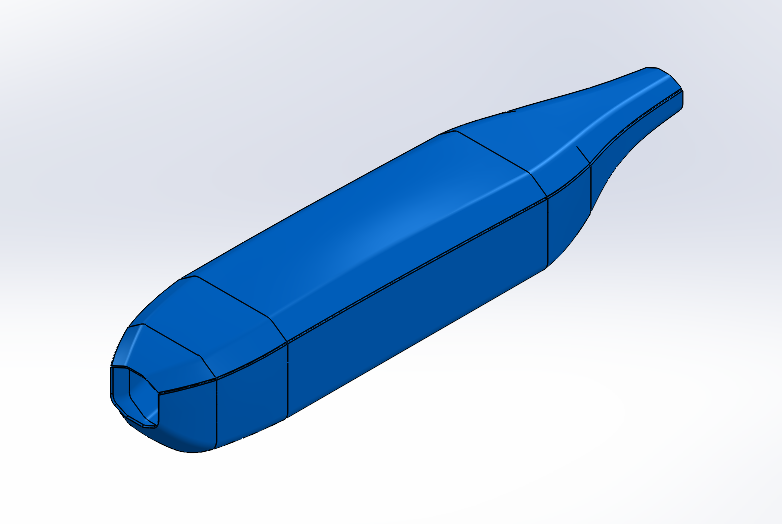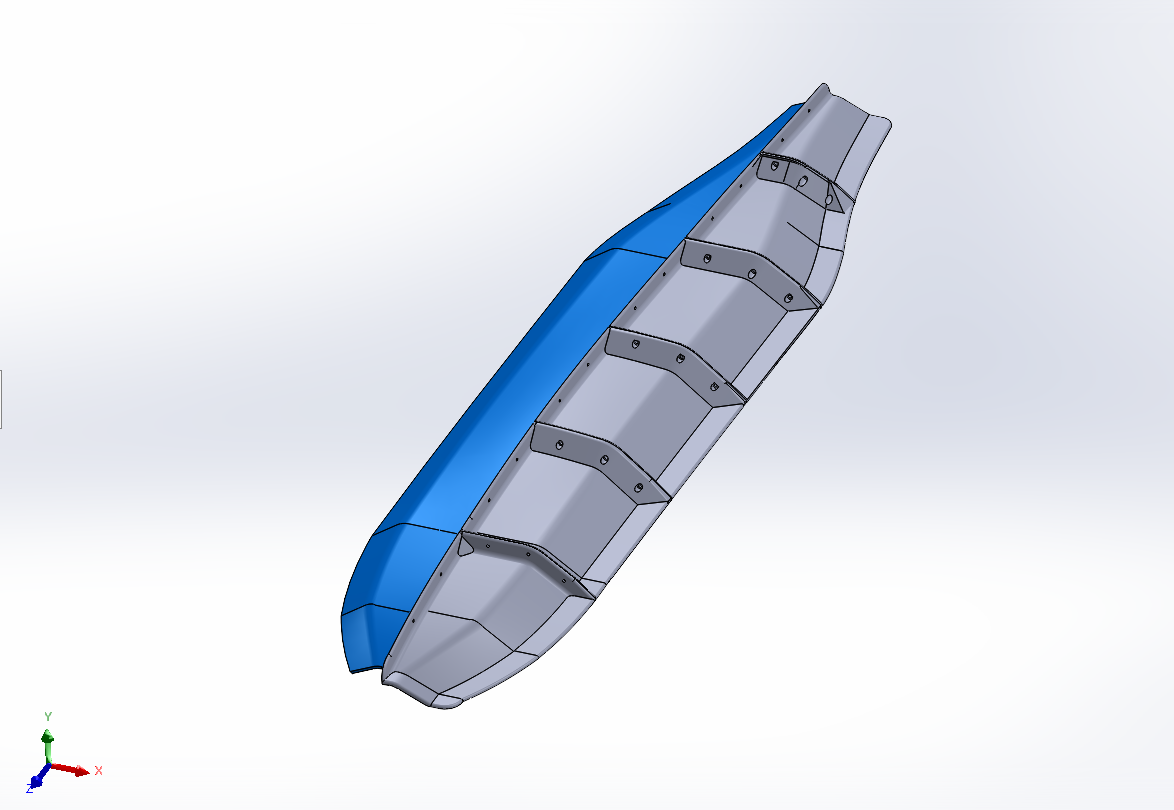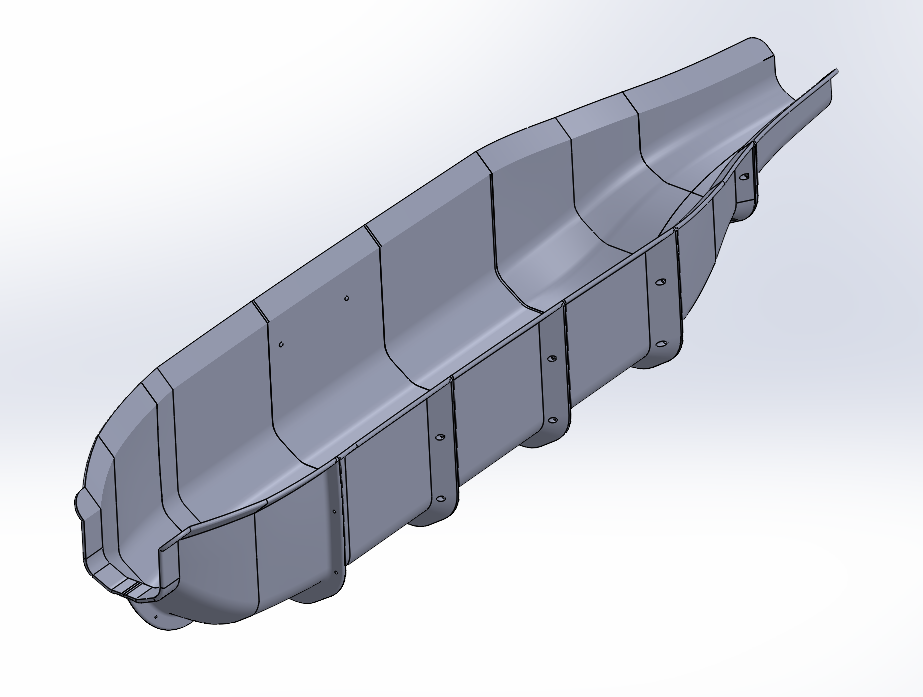Innovating Carbon Fiber Layups
By Mechanical Team | November 2, 2024

Building on our initial aerodynamic and structural design work, we then focused on creating the fuselage molds to conduct carbon fiber layups. Using Solidworks, we took the initial skin shape design of the fuselage and added an external layer to it. We then split the mold into two main sections for the roof and the body. Adaptations were made to make the mold manufacturing and layup process easier, such as lips for ease of carbon fiber placement. The mold was sliced into several sections to fit on our 3D print bed, with holes for fasteners added to assemble each section. With the final designs in place, we 3D printed and assembled the molds. This process helped refine CAD design skills and allowed us to visualize the fuselage geometry prior to manufacturing. Ultimately, the final mold was successfully designed, 3D printed, and assembled, allowing us to move onto the carbon fiber layups.
Key Achievements:
- Designed fuselage molds in Solidworks for carbon fiber layups.
- 3D printed molds for practical manufacturing trials and validation.
- Gained hands-on experience in using composite materials in aerospace applications.
Image Gallery:

Onshape model of electronics, used to determine approximate fuselage dimensions

Onshape model of fixed-wing design